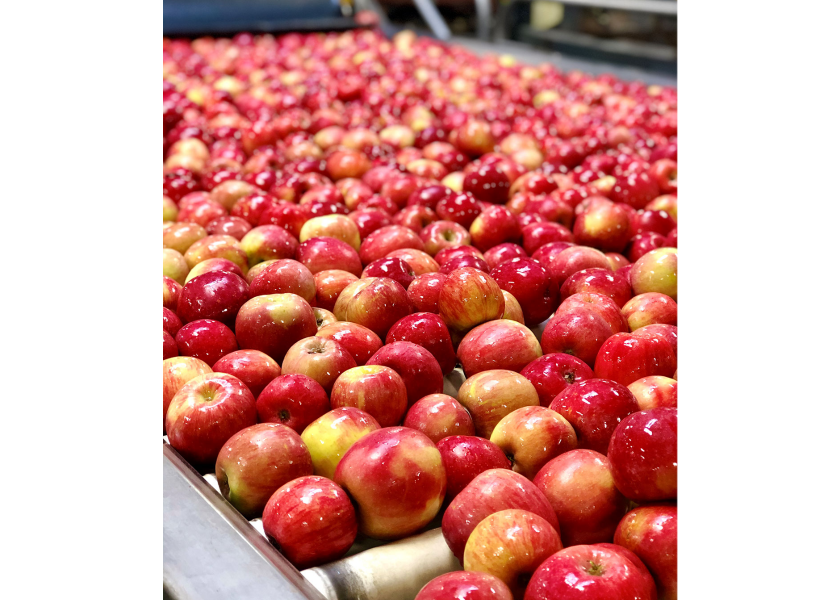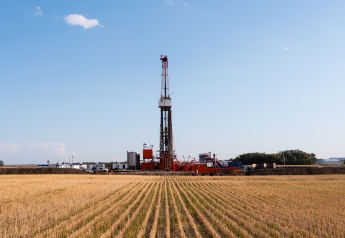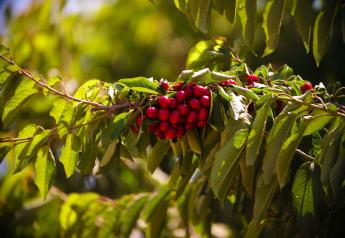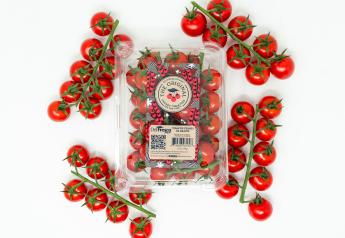USDA: growers on watch for long-term effect of heat on fruit

The summer heat in the Northwest has added some uncertainty to the longer-term quality outlook for apples, while the 2021-22 U.S. citrus output is expected even lower than last season’s modest crop.
Those were two observations in the 37-page U.S. Department of Agriculture’s Fruit and Tree Nut Outlook report, published in late September.
The report said the USDA’s National Agricultural Statistics Service forecast 2021 apple, grape, peach, cranberry, and sweet and tart cherry production up but forecast pear production down.
“For many crops, the impact of record high heat in some areas and California’s on-going drought is uncertain,” the report said.
Apple and pear update
During the Northwest “heat dome” in late June and early July, the USDA said growers experienced high temperatures in Washington, Oregon, Idaho, Nevada, Montana, California, and parts of Western Canada. In Wenatchee, Washington, one of the main tree fruit production areas, temperatures reached a record 113 degrees on June 30, 29 degrees above normal.
Between June 25 and July 1, 6 out of 7 days reached 100 degrees or more, and highs reached 100 again on July 7.
“Many growers think they could have lower production, smaller sizes, more sunburn damage, and/or internal fruit damage” the report said. Complete harvest totals are not available for most crops yet, and the full impact of the heat remains to be seen, the report said.
“Even after harvest, there will be some uncertainty about how stored fruit will hold up,” the report said.
The USDA estimated the 2021-22 season apple harvest to be 10.5 billion pounds, up 3% from 2020-21 but down 5% from 2019-20.
Even with record high temperatures in Washington during the summer, the USDA August production estimate for the 2021-22 Washington crop was up 7% from the previous year to 7.4 billion pounds.
The latest Washington State Tree Fruit Association’s fresh estimate was 124.8 million 40-pound boxes — an average crop — up 2.3% from last year. Washington growers are watching their crop for any evidence of heat damage which could reduce the yield below forecast levels, the USDA said.
The agency said the U.S. pear crop forecast similar to last year with losses in Washington and gains in Oregon and California: In early June, before the heat dome in the Pacific Northwest, USDA predicted the 2021-22 pear harvest to be 670,000 tons, down less than 1% from the previous season but lower than the 2017–19 crop.
Washington, the largest pear producer in 2020-211, is expected to have 19% less production than the previous year. Production in Oregon and California is expected to be up 10% and 39%, respectively, in spite of earlier production problems, which included drought in
California and freezes and/or stinkbug damage in Oregon, according to the USDA.
The Northwest heat wave may have some negative impact on pear production levels, but growers are waiting to see the whole harvest before trying to assess any damage.
“Most pear trees are traditional trees—tall with large canopies providing shade; this may protect pears to some degree compared with new apple orchards, which are trained into a fruiting wall with little shade and with leaves pruned to maximize sunlight to the fruit,” the report said.
Citrus outlook
The past citrus season’s production was below average, and the outlook for 2021-22 looks to slide somewhat below that level, the USDA fruit outlook said.
The USDA’s final estimates for the 2020-21 citrus season show U.S. citrus production reached 6.9 million tons, down 12% from 2019-20.
Final production numbers for U.S. citrus output in 2020-21 is below levels forecast at the outset of the season, mostly due to a lower than anticipated valencia orange crop in Florida and navel orange crop in California.
In addition, the USDA said grapefruit losses due to Winter Storm Uri in February 2021 reduced the Texas grapefruit crop to only half the volume predicted in the initial season forecast from October last year.
The report said there were reductions in both the processing and fresh orange crops, with total orange production split evenly between these markets. Total citrus volume in 2020-21 is the lowest since Hurricane Irma’s aftermath reduced Florida’s citrus harvest in 2017-18 and the second lowest in more than half a century.
Meanwhile, citrus production in Florida decreased to 2.6 million tons in 2020-21, down 21% from the previous season, the USDA said. Texas growers also experienced declines in production and reached a 28-year low of 141,000 tons — down 40% in 2020-21 compared with the previous year.
Despite a robust tangerine crop, California experienced declines in orange, grapefruit, and lemon production this season with an overall reduction of 3% (125,000 tons) from last season, the report said.
Arizona experienced a major reduction in lemon production in 2020-21, decreasing more than 55% from 2019-20.
Why so down?
Declines in citrus production this season can be attributed to multiple factors, the USDA said.
“These factors include the continued negative effects of citrus greening disease also known as Huanglongbing (HLB), on the Florida industry, extreme temperature damage to the crop in Texas, and Arizona, and attrition in bearing acreage in Florida, Texas, and California,” the fruit outlook report said.
The U.S. citrus production for the fresh market was estimated at 3.45 million tons in 2020-21, down 6% from the previous season, with smaller fresh-market crops of oranges (down 11%), grapefruit (down 15%), and lemons (down 6%).
Representing just under half of all U.S. citrus production for the fresh market, the fresh-market orange crop decreased from the previous season to 1.68 million tons due to smaller crops in California, Florida and Texas.
With a supply contraction and robust demand, prices increased.
Overall, the USDA said average equivalent-on-tree price for a box of fresh oranges increased from $16.57 in 2019-20 to $21.43 in 2020-21 due to higher prices in September through May. Furthermore, lower exports this season (a decrease of 8%) are indicative of higher domestic demand. Exports to South Korea, Canada, and Hong Kong (the top three export markets for U.S. oranges) were all down by 12%, 15%, and 20%, respectively.
U.S. imports of fresh oranges in 2020-21 (November through July) were down 6%, from the same period last year. Although fresh orange imports from Mexico were up 8% there were marked decreases in imports from Chile and South Africa, the second- and third largest
suppliers of fresh oranges to the U.S.
2021-22 outlook
The USDA will release initial 2021-22 forecasts for all-citrus production in the U.S. in October 2021. The 2021–22 California Navel Orange Objective Measurement Report released September 10 by the USDA predicted navel orange production in California at 70 million 40-pound cartons, down 14% from the previous year. This forecast decrease in production is most likely due to a reduction in fruit set and size, and, to a lesser extent, bearing acreage.
The results of the first orange and grapefruit maturity tests for Florida’s 2021/22 season were published by USDA, NASS on September 10. Sampled fruit included early oranges (which include navels), mid-season oranges (mostly valencias), and red and white seedless grapefruit.
Citrus greening disease remains a threat to citrus grove health and productivity across all producing states. In Florida, where greening is rampant, total bearing acreage decreased by another 3% this season to 369,300 acres. In the other citrus-producing states, the USDA said greening is less prevalent yet can lead to higher production costs, especially as infected trees are removed and/or replaced. In 2020-21, there was also a decrease in total bearing acreage of California citrus of 2,000 acres, or less than 1 percent, over last season due to reduced navel and valencia orange acreage.
The USDA said bearing acreage in Arizona and Texas remained steady with 2019-20 levels at 7,300 and 23,800 acres, respectively. Assuming present trends continue, total production in 2021-22 can be expected to be below 2020-21 levels.







